Click here and press the right key for the next slide (or swipe left)
also ...
Press the left key to go backwards (or swipe right)
Press n to toggle whether notes are shown (or add '?notes' to the url before the #)
Press m or double tap to slide thumbnails (menu)
Press ? at any time to show the keyboard shortcuts
A Dual Process Theory of Mindreading
implicit / modular
/ ‘system-1’ / ...
innate
informationally encapsulated
domain specific
subject to limited accessibility
speedy
tacit
subpersonal
unconscious
...
‘it seems doubtful that the often long lists of correlated attributes should come as a package’
Adolphs (2010 p. 759)
‘we wonder whether the dichotomous characteristics … are … perfectly correlated
Keren and Schul (2009, p. 537)
a fresh start



Dual Process Theory of Mindreading (core part)
Two (or more) mindreading processes are distinct:
the conditions which influence whether they occur,
and which outputs they generate,
do not completely overlap.
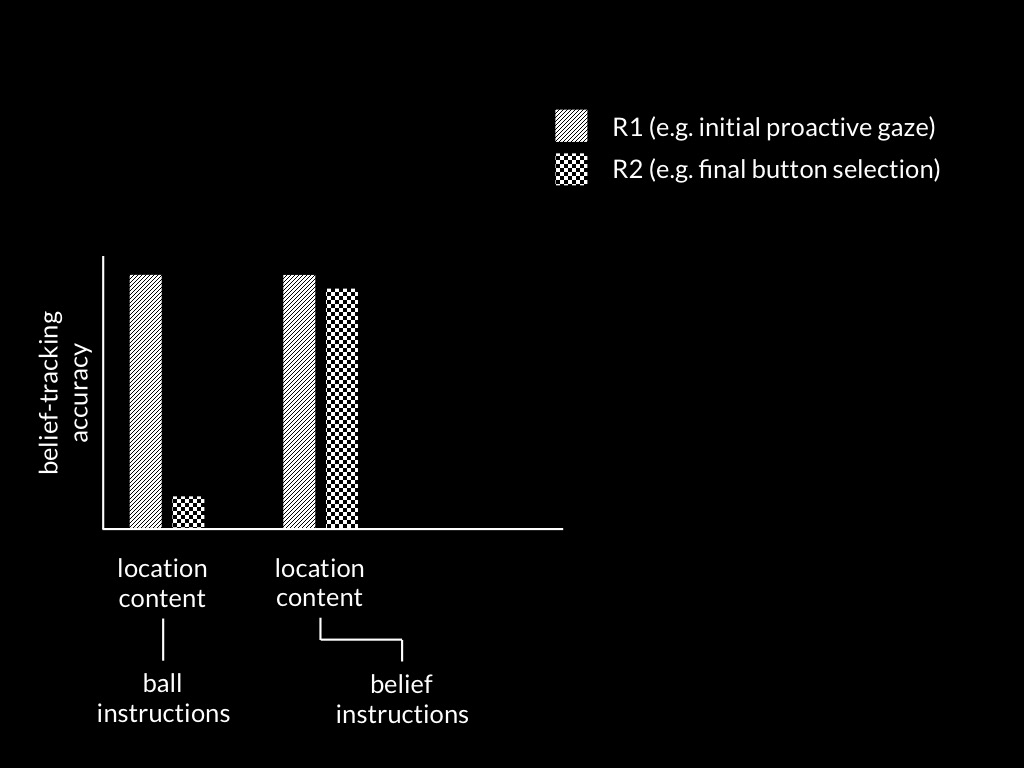
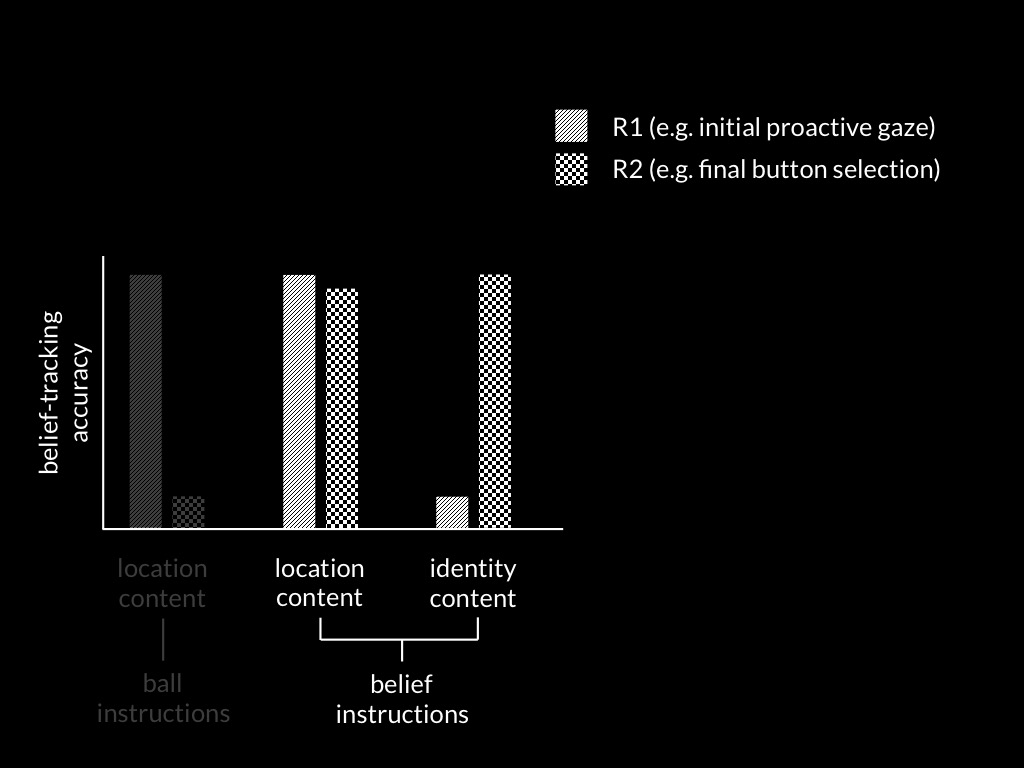

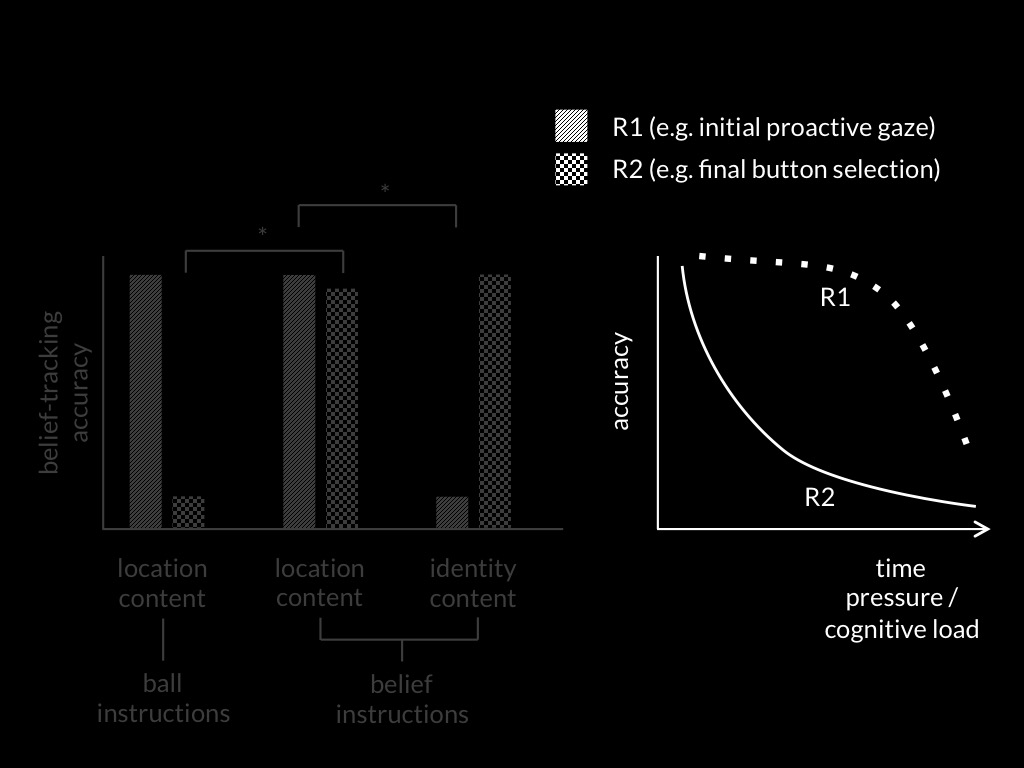
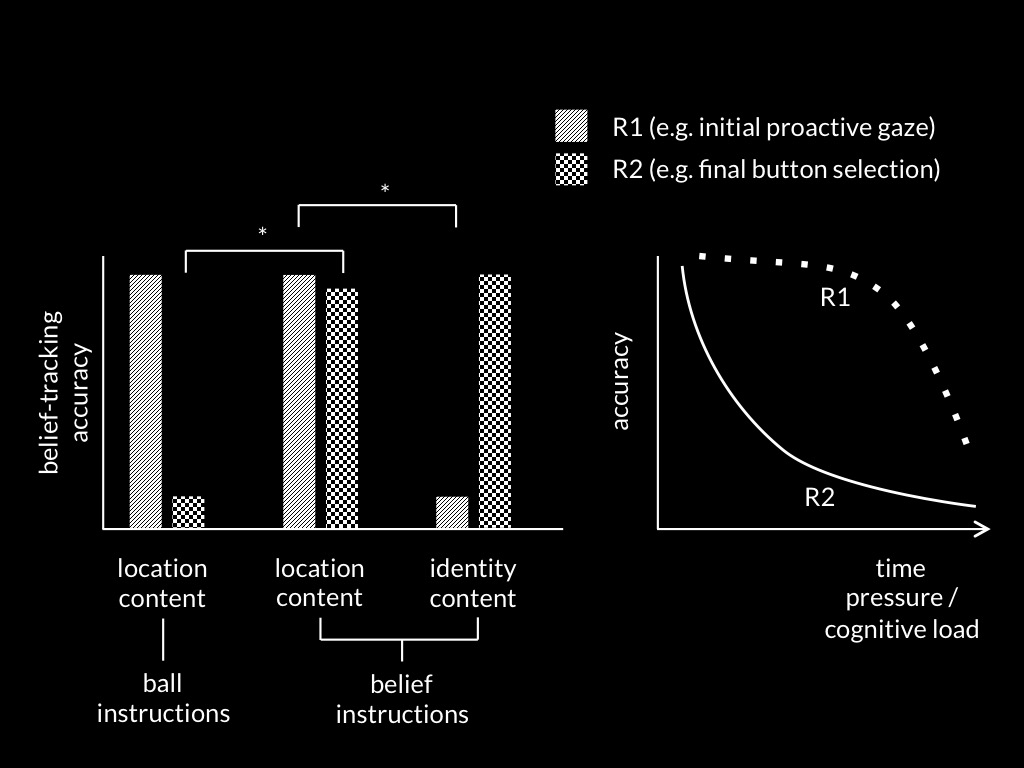
Process 1 -> Response 1
Process 2 -> Response 2
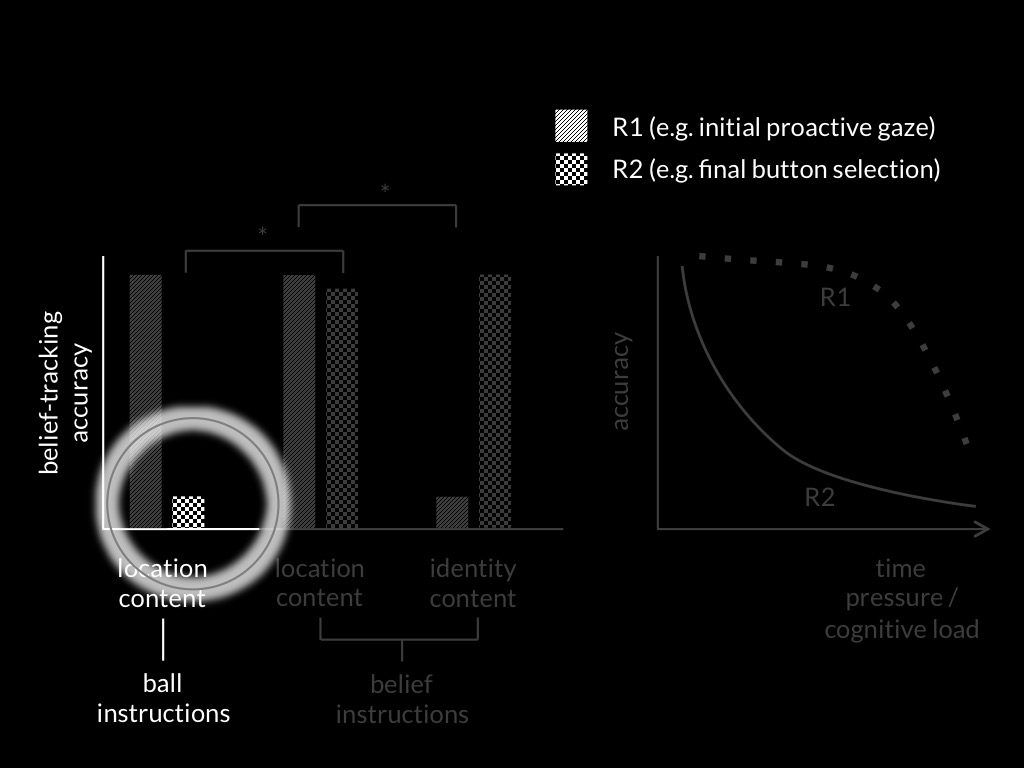


Dual Process Theory of Mindreading (core part)
Two (or more) mindreading processes are distinct:
the conditions which influence whether they occur,
and which outputs they generate,
do not completely overlap.